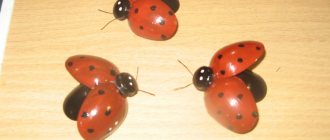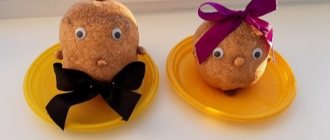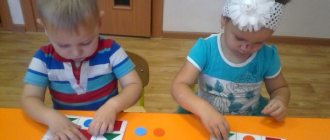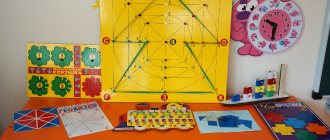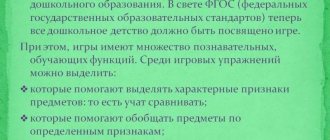- Reports and messages
- Plants
- Spruce
Spruce belongs to the pine family.
This is an evergreen tree, a symbol of the New Year. Spruce can grow up to fifty meters in height and live up to three hundred years. In the USA there is a spruce tree that is eight hundred and fifty-two years old. There are about forty-five varieties of tall spruce trees. Of these, the following can be noted: Eastern European or ordinary, Siberian, Oriental, Korean, Ayak, Tien Shan, Glen spruce, Canadian, red, Serbian, blue.
Low spruces are called dwarf. Dwarf spruces have found wide application in the field of landscape design and are often used in home and interior decoration. There are the following types of dwarf spruce trees: Push spruce, Nidiformis spruce, Nana spruce, Bialobok spruce.
The distribution area of spruce is very large. The common spruce has the largest distribution area: Western Europe, Russia and the Urals. Siberian and Ayan spruce grows in Siberia, and eastern spruce grows in the Caucasus. There are varieties of spruce that grow in certain climates: for example, only on the Kuril Islands, southern Sakhalin and the island of Hokkaido.
Spruce reproduces with the help of heterosexual cones. When the seeds ripen, the cone falls to the ground and is carried away by the wind, sometimes very far. Spruce begins to reproduce after fifteen years of growth.
Spruce is not only an ornamental plant, it is widely used in various fields. Spruce bark, wood, pine needles and cones are used.
Spruce wood is very “musical” and has the ability to “hold” sound. The speed of sound propagation in spruce is fifteen times greater than the propagation of sound in air. Previously, in Rus' they made harps from spruce, but now they make soundboards for cellos, violins and guitars. To do this, choose a tree without curls and knots. Since houses were previously built from spruce, restorers are looking for pieces of spruce in the ruins of old houses that will be used in restoration: it is believed that such spruce has acquired even greater musicality with age. They tried to replace the spruce with another tree, but they did not find a second such “musical” tree.
The second major area of spruce is wood chemical production. Cardboard, paper, cellulose are made from it, and turpentine is obtained. Tannins are obtained from the bark, which are used in industry for tanning leather and in medicine.
Essential fractions and volatile oils are isolated from the needles, which are used in the perfume industry and medicine.
Spruce is widely used in ornamental gardening and park construction. Spruce trees are often planted along roads for protection from the wind. Nuts from the cones serve as food for birds and animals.
In many countries, spruce is decorated for the New Year. In America, the Christmas tree is decorated long before Christmas. They decorate mainly with edible decorations: tangerines, sweets and red and white candies in honor of Jesus Christ.
In Germany, Christmas trees glow and shimmer. They are decorated with balls, garlands, and Santa Claus figurines.
In Finland, trees are protected, so they prefer to decorate artificial Christmas trees with homemade decorations.
In many countries, for the New Year they decorate not a Christmas tree, but other trees: in China - a tangerine or orange tree, in Mexico - a palm tree, in Africa - a baobab tree. Often in Asian countries they dress up not a tree, but a rake in order to “rakes” more wealth in the new year.
Description
The Christmas tree is a slender tree that can grow up to 35 meters high. During the first 10 years it grows very slowly - a few cm per year, then the growth rate increases, but after 100-120 years it slows down again. It has a pyramidal (triangular) crown with a sharp tip. The branches are densely located throughout the trunk. It is often difficult to see behind the spruce feet.
In a young tree, the bark is smooth, gray-brown in color; in an old tree, the bark becomes gray and peels off in thin plates. The needles are dark green and shiny, sharp and prickly. The needles are much shorter than those of pine, up to 3 cm long.
They stay firmly on the branches for 7-10 years. But in urban conditions, with heavy smoke in the air, the lifespan of needles is greatly reduced: they fall off after only 3 years.
The spruce root system is located close to the surface, so strong winds can knock down the tree.
Spruce is a long-liver, it lives 250-300 years.
Medicinal properties of Spruce
Fir cones, pine needles and resin are used for medicinal purposes.
The needles contain bactericidal substances, amino acids, chlorophyll, vitamins and phytoncides. Spruce needles are rich in vitamin C, the concentration of which increases in winter, therefore, since ancient times, pine “tea” has been an excellent remedy for scurvy and at the same time strengthened the entire body.
Daily consumption of 3–4 spruce needles for a month can restore immunity and increase resistance to a number of viral diseases.
Several spruce branches placed in a vase in a room can kill harmful bacteria in the room, leaving a pleasant aroma in the air.
Fir cones are rich in tannins and essential oils. They also contain copper, manganese, aluminum, and iron.
Essential oils are used in the fight against acute respiratory infections and diseases of the upper respiratory tract.
Syrup from the buds of Spruce is prescribed for microinfarctions.
A decoction of pine needles is used by inhalation to treat sore throat and sinusitis.
Spruce resin or resin has antiseptic properties and can be used in ointments to heal wounds and ulcers.
Where does it grow
It grows throughout the Northern Hemisphere. It can be found in North America, Central and Northern Europe. It is widespread in Russia: in Siberia, the Urals, the Far East, the Caucasus, and in the steppe zone. Also grows in China and Japan.
50 types of in total . The most common: Siberian, European, Caucasian, Canadian, white, red, black.
The Christmas tree is the basis of the taiga. It grows in mixed forests, coexisting well with larch, pine, Siberian cedar, fir, oak, linden, birch, aspen, and hazel. It also forms pure spruce forests, which have a number of features:
- It's damp and dark here;
- the soil is completely covered with moss;
- under the spruce paws grow dense thickets of blueberries, lingonberries, wood sorrel, ferns, and cuckoo flax.
Conclusion
It is impossible to remain indifferent to the strict symmetrical silhouettes and exquisite shades of blue spruce trees. That is why these noble conifers are often found in landscape design projects. They harmonize perfectly with other plants, look good at any stage of growth and emit a pleasant, calm energy. By choosing popular varieties of blue spruce, you will surely decorate the landscape and create a green corner that you will love with all your heart.
You can also see all our live Christmas trees for sale.
Rate this article
(Votes: 20, Rating: 5.45)
Growing conditions and reproduction
For a spruce to grow well, it needs the following conditions:
- Shadow. This tree does not really like the sun; young trees often get sunburned in open areas.
- Sufficient hydration. The Christmas tree does not tolerate drought well.
- Temperate climate. The tree is cold-resistant, not afraid of frost, but it does not grow well in the southern regions, where summers are too hot and long,
- The soil should not be too dense, but moderately fertile.
Spruce is a monoecious plant. This means that male spikelets and female cones grow on the same tree. Propagated by seeds, the germination rate of which is very good. The cones open in late November - early December, the seeds fall out, are picked up by the wind and carried far around the surrounding area.
In early spring, the seed awakens and begins to grow. The main condition for the sprouts to take root and begin to develop well is a warm spring, because they die during spring frosts.
Popular message topics
- Sharks
Man has been fascinated and interested in the sea and its inhabitants since ancient times. Many people liked the waves splashing on the shore and the beautiful blue water visible in the distance. Still, there were no such brave souls who agreed to go to the open sea, - Occupational safety
It is no secret that a person spends most of his life at work. A typical working day lasts on average 8 hours. Therefore, a very important factor is not only comfortable conditions for high productivity, - City of Arkhangelsk
The city of Arkhangelsk was founded by Ivan the Terrible VI. But these lands first appear in chronicles in 1419. In 1553, trade relations began to develop in this area.
Use in the national economy
Spruce plantations can often be seen in sanatoriums. Because their needles release phytoncides that clean and disinfect the air. Also, spruce often becomes the basis of landscapes in personal plots.
High-quality musical instruments are made from this wood. Soft wood is used to make paper, rayon, and smokeless gunpowder. Resin, tar, rosin, and turpentine are obtained.
Fir cones are widely used in folk medicine. Healers believe that a Christmas tree is a donor tree; if you lean against it and stand there for a few minutes, it will give a person energy and strength.
the forest guest for the New Year.
How much joy it brings, filling the house with a special forest smell and pleasing the eye with its beauty!
If this message was useful to you, I would be glad to see you in the VKontakte group. Also, thank you if you click on one of the “like” buttons:
image of Eli
Since childhood, at Christmas and New Year, people have become accustomed to smelling fir branches.
Mixing with the smell of tangerines, this fragrant pine aroma was a harbinger of a miracle, gifts, new experiences and the New Year. For many centuries, Spruce has personified the symbol of a new cycle. In ancient times, remaining evergreen, Spruce was an allegory of eternal youth and immortality, longevity and fidelity.
For the same reasons, the Spruce “spruce branches” were and remain in many villages a sign of a bygone life. During the funeral procession, “spruce branches” are thrown at the feet, saying goodbye to the departed. Their age has ended, but has passed into eternity.
In Scandinavia, spruce was used for ritual bonfires. The resinous firewood gave the fire unique strength.
Information for younger schoolchildren. Theme: Spruce
The spruce genus includes 45 species growing all over the world. There are spruce trees with bluish, bluish-white and golden-yellow needles. The trunks of some spruce trees reach 2 m in diameter, and the height of the trees is 40-50 m.
Spruce lives up to 500 years. Forms a slender crown pyramid with raised branches at the ends. The trunk is large, straight, covered with reddish-brown scaly bark. The needles are prickly, tetrahedral, sharp.
Spruce cones are narrow and long. At the end of winter they open and seeds fly out. The winged seeds are picked up by the wind and carried far from their native tree. Young tender Christmas trees grow from the seeds. In an open field they can freeze. And under the protection of mature trees, they are not afraid of frost.
An adult spruce becomes the mistress of the forest. Neither pine nor birch can live in its shadow. Only moss and rare herbs with white flowers grow in the spruce forest. In the dusk, insects quickly notice the white flower. Apart from them, there is no one to pollinate the flowers. The wind could, but it doesn’t happen in the spruce forest.
Spruce is considered evergreen. But its needles do not last forever. The needles fall off every 7-9 years. In autumn, the spruce sheds at least a seventh of its needles, gradually changing its appearance.
The wood is used to make paper, furniture, and for construction and sawing timber. Resonant spruce (spruce grown in the mountains) is used to make musical instruments. Spruce produces resin, which contains rosin and turpentine.
The ancient inhabitants of Germany believed that the spirit of the forest lived in spruce, protecting plants, animals and birds. They believed that spruce could cope with evil forces, since its branches were covered in needles.
It’s hard to imagine a New Year’s holiday without a Christmas tree. The spruce came to Russia as a New Year's tree according to the decree of Peter I “On the celebration of the New Year” dated December 20, 1699. Samples of branches were exhibited in Gostiny Dvor. “Fiery fun” was scheduled on Red Square; it was ordered to fire cannons and muskets and launch rockets.
Spruce is a coniferous evergreen tree of the pine family. This is a riddle about her: “In winter and summer, the same color.” The message will take a closer look at this interesting tree, tell you where it grows and how it is used in the national economy.
Leave your comment
It will be easier for foreign students to stay in Russia
Reading time: 1 minute
An Italian teacher gave children a summer assignment and became famous
Reading time: 4 minutes
More than 347 thousand people take part in the Unified State Examination in social studies
Reading time: 1 minute
All-Russian student graduation will take place on July 10
Reading time: 2 minutes
Rosobrnadzor: almost half of teachers do not reach the basic level of training
Reading time: 2 minutes
Moscow State University again took first place in the ranking of the best universities in Russia
Reading time: 1 minute
Gift certificates
Responsibility for resolving any controversial issues regarding the materials themselves and their contents is taken by the users who posted the material on the site. However, the site administration is ready to provide all possible support in resolving any issues related to the work and content of the site. If you notice that materials are being used illegally on this site, please notify the site administration using the feedback form.
All materials posted on the site were created by the authors of the site or posted by users of the site and are presented on the site for informational purposes only. Copyrights for materials belong to their legal authors. Partial or complete copying of site materials without written permission from the site administration is prohibited! The opinion of the administration may not coincide with the point of view of the authors.
Source
Abstract of the educational activity for cognitive development “Forest Beauty Spruce” for children of the older group
Abstract of GCD on cognitive development using mnemonics and research technology
with children of senior preschool age.
Fedoseeva Anastasia Sergeevna
Topic: “ Forest beauty spruce ”
.
Goal: development of environmental culture of children .
Integration of educational areas: " Cognitive development "
,
“Speech
development ” ,
“Physical
development ” ,
“Artistic and aesthetic
development ” ,
“Social and communicative
development ” .
Educational field " Cognitive development "
1. To form cognitive interest , to identify and enrich children’s about the forest as an ecosystem.
2. Give an idea of the importance of spruce in the life of forest inhabitants and the use of this tree by humans.
3. Continue the formation of environmental consciousness in children’s .
4. To promote the accumulation in children of specific ideas about the characteristic features of coniferous trees.
5. Improve skills in working with paper using the origami
.
6. Develop curiosity , attention, logical thinking.
7. Foster a caring, respectful attitude towards nature.
Educational field "Speech development "
1. Activate the dictionary on the topic.
Educational field "Physical development "
1. Exercise children in relaxation techniques.
2. Develop gross motor skills , motor skills of the fingers
Educational field “Artistic and aesthetic development ”
.
1. Improve skills in working with paper using the origami
.
2. Develop creativity.
Educational field “Social and communicative development ”
.
1) Contribute to the creation of a positive emotional mood, the formation of readiness for joint activities with peers.
Equipment: artificial Christmas trees; spruce and pine twigs and cones; illustrations depicting a woodpecker, crossbill, squirrel, mouse; branches, cones and seeds of spruce and pine; letter from Old Man - Lesovichka ; mnemonic table for I. Tokmakova’s poem “Eli”
; 10*10 squares made of green double-sided paper.




